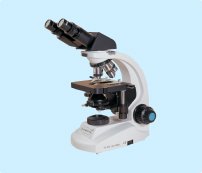
Medical devices and diagnostics
1246 views
Diagnosis Of Erectile Dysfunction: What Tests To Do?
The first step for a correct diagnosis of erectile dysfunction is to exclude both metabolic and cardiovascular systemic disorders. It will therefore be obligatory to request, especially for the patient of intermediate age, a cardiological examination with exercise tests and to have routine blood tests performed.
From a more strictly specialized point of view, the diagnosis of erectile dysfunction must take advantage of the study of hormonal dosages, especially in the forms that are accompanied by a decrease in desire and libido. The main hormones to be studied include TSH, free and total testosterone, cortisol, prolactin, beta estradiol, homocysteine.
From a vascular point of view the main tests to be proposed to diagnose erectile dysfunction are:
The Rigiscan test, a nocturnal test that allows for three consecutive nights to measure the erections that physiologically occur during deep sleep, in the REM phase, in the absence of consciousness which, as we know in these cases, can interfere with the erectile response.
Another very valid vascular test is the basal and dynamic echocolordoppler of the corpora cavernosa, in which a substance called prostaglandin, which allows the corpus cavernosum to be artificially dilated, is then injected with a micro-needle, thus allowing the sonographer andrologist to verify the validity of arterial flow and venous outflow. What this test can highlight is a difficulty that the blood has in reaching the corpora cavernosa, therefore in arterial forms, or ease of venous outflow, a framework that is defined as venous leakage.
Once the problem is framed, it is necessary to propose an adequate therapeutic path. In the forms that see a hormonal interference it will therefore be essential to create a correct hormonal balance, sometimes with testosterone replacement therapies such as may be necessary in men in andropause, sometimes normalizing hypothyroidism or hyperprolactinemia, these latter diseases being also of competence of the endocrinologist.
In the forms that see the vascular component as the basis of the problem, the therapies to be proposed for the treatment of erectile dysfunction are numerous, both on the basis of the extent of the problem and also on the patient’s ability to respond. The classic inhibitors of the PDE5i, in commerce since 1998, are the molecules that have clearly changed the therapeutic approach towards the patient suffering from erectile dysfunction and have also open numerous therapeutic windows. These molecules have the ability to inhibit an enzyme that is able to reduce the presence of nitric oxide in the corpora cavernosa with its activity. Nitric oxide is an indispensable molecule for maintaining vasodilation and therefore for erection; by blocking this enzyme, drugs like Viagra create more availability of nitric oxide in the corpora cavernosa.
Posted in Medical devices and diagnostics
(0 voices, average: 5 of 5) 1246 vieves
































